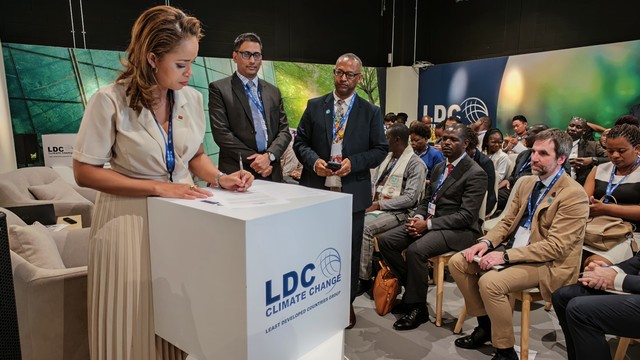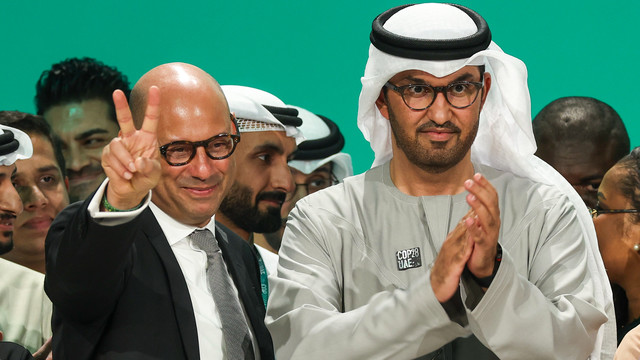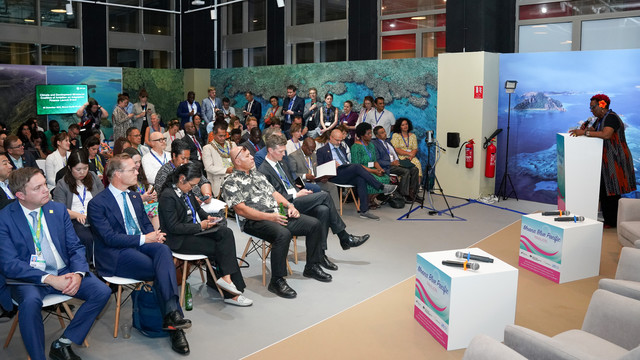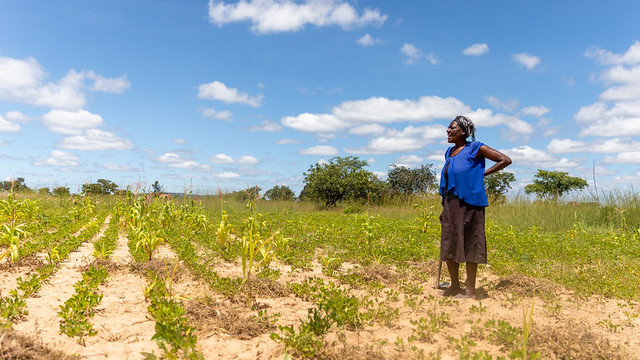Smallholder farmers: unsung giants of climate and nature investment
As an IIED-led survey reveals the impressive scale of smallholder farmers’ own investments in climate change adaptation, we call on world leaders gathering for the upcoming global climate negotiations (COP28) to provide more direct finance and tailored support for those on the frontline of climate change and biodiversity loss.



Florian Gitu, a farmer from Dofa Village in Tanzania’s Karatu district, practices crop diversification, organic farming and has a tree nursery (Photo: copyright Roshni Lodhia/Panos Pictures)
As the sun rises over the undulating ridged landscape of Karatu district in northern Tanzania, Florian Gitu starts another busy day. He has to tend to his small organic farm (covering one hectare), water seedlings in his tree nursery, collect cow manure for his biogas chamber, which produces gas for cooking and biopesticides for his farm, and attend a meeting to exchange lessons with his neighbouring farmers.
Fighting climate change and biodiversity loss
Florian takes immense pride in his work, as he pioneers farming approaches to help his family and community adapt to climate change impacts while also nurturing the landscape he loves.
He grows a variety of fruit and vegetables, including maize and beans. As well as providing a diversified income, this approach reduces the risks of crop failure from the irregular rainfall patterns and pest outbreaks that are becoming more common due to climate change.
The seedings he produces in his nursery provide another source of income and help his community create much-needed shade on increasingly hot dry days, as well as windbreaks for people, livestock and crops. They also improve soil quality and water retention on his farm, ensuring he can better endure drought, and enrich local communal conservation areas that capture carbon and regulate the local climate.
He shares his techniques, lessons and challenges with his village farmers’ group, supported by Mtandao wa Vikundi vya Wakulima na Wafugaji Mkoa wa Arusha (MVIWAARUSHA), a network of 13,453 smallholder farmers in northern Tanzania.
Investing in a resilient future
All over the world, smallholder producers of forest and agriculture products like Florian manage small areas of land, producing over 30% of the global food supply.
A recent IIED-led survey that engaged more than 1,800 producers across 13 different countries in Asia, Africa and Latin America found that those smallholder producers, often managing 10 hectares or less of land, are all experiencing impacts of climate change.
And on average, they invest 20-40% of their annual income to adapt to those impacts. Like Florian’s, their adaptation actions are often good for nature and can help conserve biodiversity and store carbon, improving their climate resilience.
The techniques they use include controlling pests, erosion, and surface water run-off; improving soil through organic farming and agroforestry; protecting natural areas; increasing the number of species of crops, trees and animals on their land; and conserving and using traditional species, landraces and animal breeds.
Globally, 439 million smallholder producers invest around US$368 billion every year in climate adaptation actions, with many positive impacts for nature. Dwarfing the $230 million pledged by governments to the Adaptation Fund at COP27 in 2022, it is also a gross underestimation of their investments, as it does not consider the unpaid labour producers spend on these actions, which averages around 107 days annually. That’s nearly one-third of the year.
Mobilising and organising for a more resilient future
Membership-based organisations such as MVIWAARUSHA play an instrumental role in mobilising and organising individual smallholder producers, giving them collective influence on policies and markets, and helping them weather the uncertainties and risks caused by climate change.
As well as helping farmers like Florian learn from each other, MVIWAARUSH supports them to establish microcredit facilities that give its members access to finance, allowing them to diversify their businesses and better cope with the impacts of climate change.
It also provides members with training on climate change mitigation, adaptation and other topics, and helps them select and plant more drought-tolerant crops.
Innovative finance to unleash organisational power
IIED works with membership-based organisations to deliver climate-resilient landscapes through the Forest and Farm Facility (FFF). FFF is one of the rare, but much-needed, partnership-based financing models that mobilises funds globally and provides direct financial support to membership-based organisations like MVIWAARUSHA. According to a new report (PDF) published by 10 family farmer organisations and networks, only 0.3% of international climate finance reached those smallholder farmers and their organisations in 2021.
We need more innovative public and private financing models like FFF to channel more climate and nature finance to similar organisations so they can better leverage the collective investment power of smallholder producers for more equitable, biodiverse and resilient forest and farm landscapes.
That is why we are conducting research and developing new projects with our partners to build dialogues and partnerships among public and private impact investors and mission-driven enterprises to reimagine how we can make the financial system work better for those on the frontline of climate change and biodiversity loss. We hope more will join forces with us.





